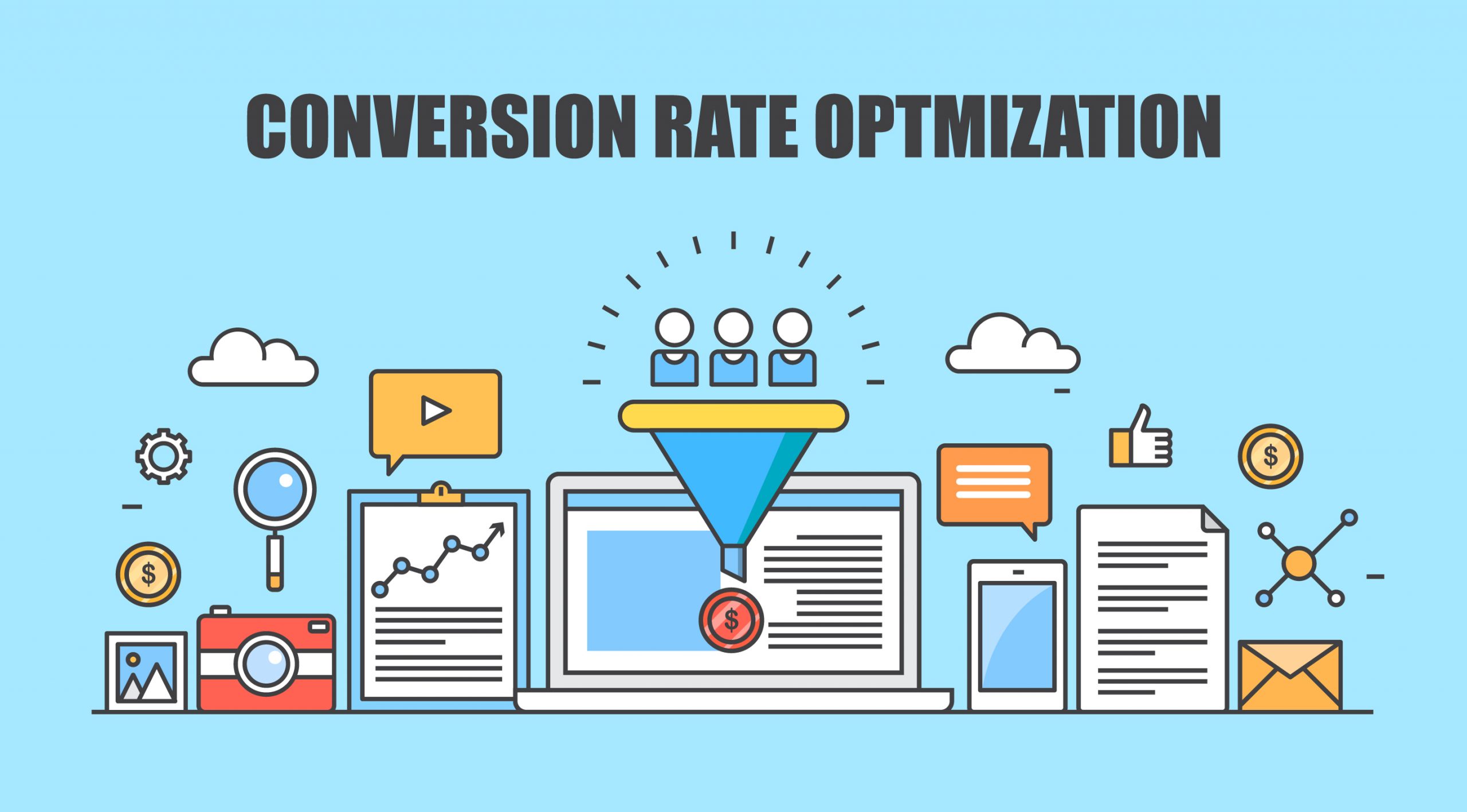Conversion Rate Optimisation (CRO)
In the online marketing context, conversion is usually understood to mean the transformation of a visitor to a website, i.e. an interested party, into a customer or at least into a registered user. However, it can also simply mean a certain digital action such as clicking on a banner. What exactly a conversion looks like and what it involves depends on the objectives of the operator of the website or marketer in question: If it is an online shop, the conversion can consist of a visitor to the site placing an order and thus evolving from an interested party to a customer.
Other types of conversions in online marketing:
- Download of an offer (music, book, etc.)
- Registration for a newsletter
- Registration in a community
- Establishing contact with the site operator
- Click on an advertisement

Conversions are measured with the “conversion rate”, it determines the percentage of prospective buyers who become buyers/subscribers when visiting a website or generally perform a certain action. If 24 out of 1,000 visitors buy, this is called a conversion rate of 2.4 percent. In order to determine the exact ratio in which visitors become buyers, the “Unique Visitor” is used, in which not all clicks but each user is recorded individually. Since the conversion rate is one of the key levers that determine the ROI of online marketing campaigns, strategic conversion optimization or conversion rate optimization is a very important part of the online marketing mix.
Influencing factors
On average, the conversion rate in online retailing is usually between one and five percent and depends on factors such as brand awareness, item prices and the size of the offer. However, since a conversion can mean many different actions, a general statement for online marketing is almost impossible.
Some other factors that influence the conversion rate are:
Visitor / Target group
If the visitors do not belong to the target group of a website, this has a negative effect on the conversion rate. On the other hand, if they belong to the target group, it has a correspondingly positive effect.
Offers
Important for a successful conversion is also the quality of what a website offers. If this is not appealing or of inferior quality, the conversion rate remains low. Examples for the quality of the offer:
- Price
- Availability
- Delivery times
- Product quality
- Payment options
- User experience
Factors here are user-friendliness, user guidance and communication of the website’s offer. If the visitors of the website correspond to the target group and the offer is of high quality, the conversion rate is mainly influenced by the user experience.
In addition to the target group, user friendliness, user guidance and the offer play a central role here. The conversion rate optimization can therefore be adjusted by layout, simplification and content, for example.
